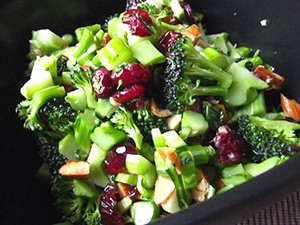 We all see advertisements on a regular basis for products that can help regulate and aid in digestion (e.g. prebiotics, probiotics and fiber supplements). But you might also wonder why you should pay attention to these particular nutrients. What makes them so vital to our health?
We all see advertisements on a regular basis for products that can help regulate and aid in digestion (e.g. prebiotics, probiotics and fiber supplements). But you might also wonder why you should pay attention to these particular nutrients. What makes them so vital to our health?
Eating fibrous foods regularly lowers LDL cholesterol, regulates elimination, helps stabilize blood sugar, improves immunity, lowers risk of colon cancer and diverticulitis, and other vital and desirable functions. 1
First, let’s discuss the difference between what exactly the terms prebiotic and probiotic mean. Prebiotics are the components of food that gut bacteria are able to ingest (soluble fiber) and probiotics are the “good” bacteria in your gut. Fiber exists only in plant foods and is categorized by its ability to be broken down inside the body: soluble versus insoluble. It is the components that pass through the digestive system, unaffected by stomach acid and enzymes, until it reaches the large intestine, aka the colon. This is where fiber begins to fulfill its purposes.
One of soluble fiber’s essential roles is to serve as fuel for the community of bacteria that live in each of our large intestines, also known as your gut microbiome. 2 The bacteria that make up your gut microbiome ingest and break down soluble fibers (prebiotics), allowing them to flourish and maintain the health of the large intestine. When gut bacteria (“probiotics”) ferment fiber (“prebiotics”), they produce short chain fatty acids (SCFAs). SCFAs serve as a quick and easily absorbed fuel for the cells of the colon. These cells then protect the lining, help complete the digestion process and help reabsorb fluids and electrolytes.3 SCFAs have also been shown to decrease insulin resistance, improve metabolism and relieve inflammation. 3 This is the primary way of getting short chain fatty acids into our body, since there are minimal amounts in food.
Insoluble fiber, on the other hand, does not dissolve or get broken down by the body but rather becomes the bulk of stool. Its presence also attracts water into the gut, which has a laxative effect and helps the stool move through smoothly. Soluble fiber, however, can dissolve and has a viscous effect, similar to avocado and chia seeds in liquid or wet foods. This viscous factor slows the speed at which food moves through the intestines, which sends signals to the brain that inhibit ghrelin release, the hunger hormone. Together soluble and insoluble fiber work together to help our gut microbiome protect the intestinal lining from damage and disease.
While there is a multitude of pre/probiotic and fiber supplements (whose efficiency is still questioned), integrating whole fiber containing foods into the diet is not only economical but also effective.
You’d be hard pressed to find a plant-based food that does not provide the body with valuable nutrients (i.e. fiber, vitamins and minerals) and energy. If you have not consumed many fiber-rich foods before, you may experience some symptoms such as gas and bloating. This is because your gut bacteria may not be used to digesting the fibrous material, and may take a bit longer to digest fiber and may create excess gas. These side effects can be largely avoided or diminished by slowly introducing fiber-rich foods into your diet. Add a serving or two to your meals each week and increase by a serving or two when you no longer experience digestive distress.
The government’s recommended daily intake of fiber is 38 grams/day for men up to age 50 and 25 grams/day for women up to age 50. 4
A list of fiber-rich foods
| Food | Amount of Fiber |
|---|---|
| Navy Beans | 19.1 grams(g) per cup |
| Split Peas | 16.3 g/cup |
| Figs | 14.6 g/cup |
| Black Beans | 12.2 g/cup |
| Avocado | 10.5 g/cup |
| Lentils | 10.4 g/cup |
| Artichoke | 10.3 g/cup |
| Acorn Squash | 9 g/cup |
| Peas | 8.6 g/cup |
| Oats | 8.3 g/half-cup |
| Chickpeas | 8 g/cup |
| Chia Seeds | 5.5 g/tablespoon |
| Flax Seeds | 3 g/tablespoon |
| Walnuts | 1.9 g/ounce |
| Almonds | 0.6 g/ounce |
The process of refining foods (i.e. white rice, bread, and pasta, and instant oats) removes or damages many nutrients including fiber. When trying to increase the amount of nutrient dense foods in your diet (like fiber-rich foods) to reap the rewards, always go whole to ensure those nutrients are still in your food.
Include fiber in your diet for the purpose of nourishing your cells and tissues. Every minute of every day, our body is at work building, breaking down, metabolizing, coordinating, eliminating and so much more. Getting adequate amounts of nutrients like fiber enhances the body’s ability to function: heart beating, lungs breathing, blood nourishing, cells metabolizing, gut lining protecting, etc. without complications in these processes. Without nutrient deficiencies or excesses, there is less chance of developing disease and/or disorders such as heart disease, Type 2 diabetes, atherosclerosis, cancers, metabolic syndrome, depression, malabsorption, IBS and more.
We can use the way we eat, our diet, our food as a tool to improve health in so many ways. Look at the food you eat and see what it is. What does it provide your body with? While taste has its role, eat for more than just you, eat for the health of your mind and body, eat for the health of your family and community, eat for the health of the earth we take from. For all these reasons, fall in love with fiber.
“Our bodies are our gardens – our wills are our gardeners” William Shakespeare
By Sarah Clark-Williams

